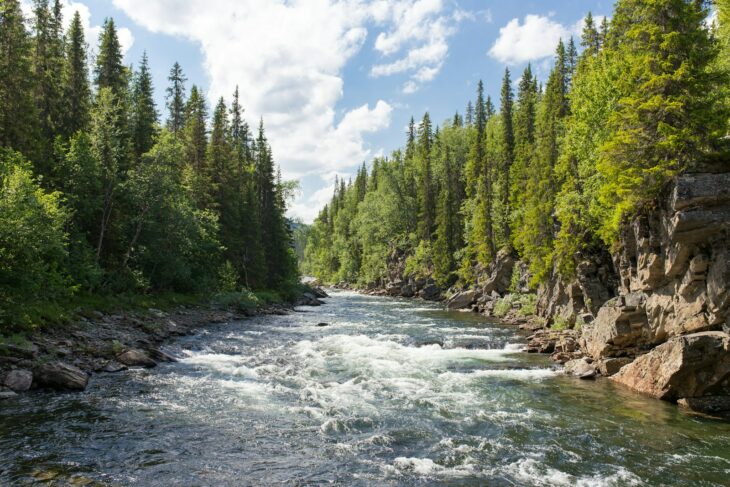River flooding threatens human lives and property and inflicts billions of dollars of damage yearly. Now, scientists suggest that global warming is causing river systems to experience “extreme” flooding events more frequently. “Extreme” flooding means the volume of water flowing through a river is greater than it has been before. Because extreme floods involve greater volumes of water than historically, these floods are often the hardest floods to predict. So, scientists are seeking new methods to predict whether river systems will experience extreme levels of flooding in the near future.
A team of scientists from Germany, Norway, and the USA studied more than 100 river basins across the United States and Germany with recent histories of extreme flooding to see if they could predict these extreme events. Most researchers in the past used rainfall measurements in an attempt to predict extreme flooding events. However, rainfall is not a very useful metric for predicting extreme flooding because there is limited time between when the rain begins and the flooding occurs.
Therefore, these scientists hypothesized that factors like a river basin’s physical structure and regional climate conditions could help them identify which rivers are especially prone to extreme flooding. They reasoned these factors can be measured at any time, making them suitable for predicting flood events before the flooding actually begins.
The researchers explained that many river systems experience smaller-scale floods that increase in size at predictable rates. However, once the amount of water involved in a flooding event surpasses a river-specific volume, known as the flood divide, further flooding volumes increase rapidly and unpredictably.
Researchers in the past have shown that rivers with a clear flood divide tend to experience more extreme flooding events than rivers without flood divides. Also, rivers with greater flood divide volumes tend to experience more extreme flooding events. So, the researchers started by identifying the volume of flood divides in each river system to test whether these could help assess the likelihood of a given river basin flooding at extreme levels.
The researchers also defined 2 other river basin characteristics that frequently appear in systems with recent histories of extreme flooding. The first represents the physical structure of a river basin and is called the Hydrograph Recession Exponent or HRE. The researchers calculated the HRE for each river system based on features like the size of the river channel and the number of streams that fed it. They also explained that flood water travels through dry and wet systems differently. So, they calculated a metric for wetness within a river basin based on regional climate records, called the Coefficient of Variable Daily Flow or COVDF.
The scientists compared values for the HRE, representing a river basin’s physical structure, and the COVDF, representing a river basin’s wetness, for each river system they studied. They found that in most cases, the HRE and COVDF of a river system could predict whether or not a river would demonstrate a clear flood divide volume. Specifically, rivers with large stream networks and long wet periods often had clear flood divides, while rivers with shorter stream networks and consistently dry conditions did not. Furthermore, the scientists identified a statistical relationship between COVDF, HRE, and flood divide volumes, suggesting these characteristics were somehow connected.
To test if these characteristics could help predict extreme floods, the scientists calculated HRE and COVDF values in more than 2,500 additional river basins in the United States and Germany. They compared these values to flood divide volumes in each river’s past and looked for a history of extreme floodwater volumes. The scientists found that the HRE and COVDF values of a river system could accurately predict whether or not it had a clear flood divide.
The researchers concluded that the physical structure and wetness of a river system can help scientists predict whether it has a clear flood divide. And since rivers with flood divides tend to experience extreme flooding events, these characteristics can also help scientists predict the flooding danger posed by a river. However, the researchers cautioned that they only studied mid-sized river basins, meaning their conclusions don’t necessarily apply to much smaller or much larger rivers. They recommended future researchers examine the relationship between the physical structure of a river, its wetness conditions, and the presence of flood divides in larger and smaller rivers to make extreme flood predictions more accurate for all types of rivers.


